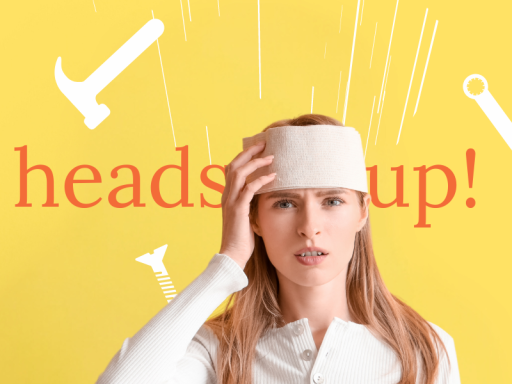Falling Object Culprits: Everyday Items Turned Hazards
A wide range of objects pose a risk of falling in the workplace. Some of the most common culprits include:
🟡 Tools and equipment: Wrenches, hammers, drills, and other tools left unsecured on ledges, scaffolding, or ladders can easily topple and injure workers below.
🔵 Building materials: Bricks, lumber, drywall, and other construction materials can become dislodged during handling or storage, especially if stacked improperly.
🟠 Inventory and stock: Loosely stacked boxes, heavy items on high shelves, and improperly secured pallets can all come crashing down if bumped or jostled.
🟢 Ceiling materials: Falling tiles, light fixtures, or suspended ceiling components can cause serious injuries, especially in areas with heavy foot traffic.
🟣 Debris and waste: Accumulated debris from construction work, overflowing rubbish bins, or loose scrap metal can create a slipping hazard and potentially become projectiles if disturbed.
Mistakes to Avoid: Building a Culture of Safety
While falling objects can seem like random events, they often stem from preventable mistakes. Some common missteps to be aware of include:
👉 Improper storage: Overloading shelves, neglecting to secure items with tie-downs, and failing to maintain safe clearance from edges.
👉 Inadequate housekeeping: Cluttered work areas, overflowing bins, and failure to clear debris create tripping hazards and increase the risk of objects falling from unstable piles.
👉 Insufficient training: Workers who lack proper training on safe lifting techniques, hazard recognition, and proper use of tools are more likely to cause accidents.
👉 Neglecting maintenance: Faulty equipment, damaged ladders, and worn-out ropes can all lead to unexpected failures and falling objects.
Building a Strong Foundation for Safety
Fortunately, there are a number of effective strategies to mitigate the risks of falling objects:
⭐️ Conduct thorough risk assessments: Identify potential hazards in your workplace and implement control measures to address them.
⭐️ Implement safe storage practices: Invest in proper shelving and storage solutions, ensure items are secured, and maintain safe clearance from edges.
⭐️ Develop a housekeeping program: Regularly clean work areas, dispose of waste properly, and address spills promptly to prevent slips and falls.
⭐️ Provide comprehensive safety training: Train workers on safe lifting techniques, hazard recognition, proper use of tools and equipment, and fall protection measures.
⭐️ Regularly inspect equipment and infrastructure: Identify and address any potential hazards related to damaged equipment, ladders, or scaffolding.
⭐️ Encourage a culture of safety: Empower workers to report unsafe conditions and promote open communication about potential hazards.
Remember, preventing a falling object accident is far easier than dealing with the aftermath. If you need support or advice in assessing your workplace for hazards and forming robust safety practises, reach out to us.

